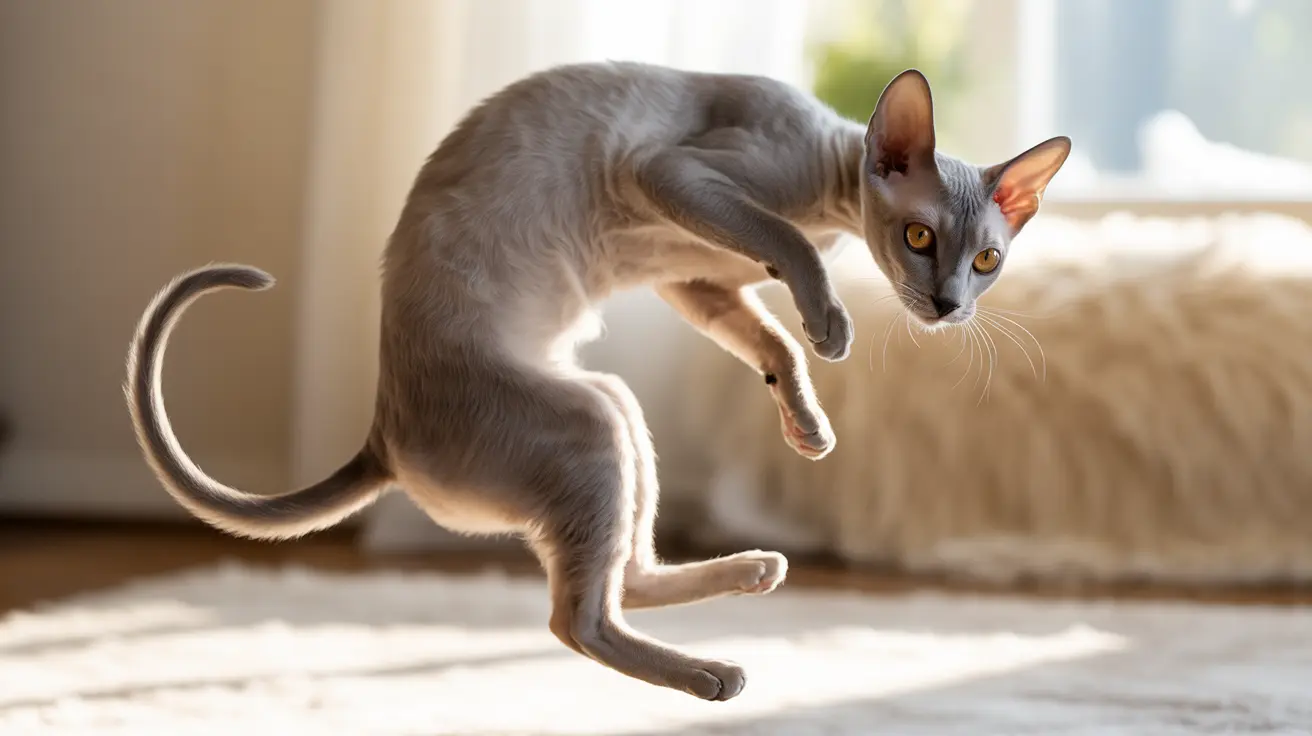When it comes to surviving falls from great heights, cats have earned an almost mythical reputation. Their incredible ability to often walk away from dramatic drops has fascinated scientists, veterinarians, and pet owners alike. But just how high can a cat fall and still survive? Let's explore the science behind this remarkable feline ability and understand its limitations.
While cats can potentially survive falls from astonishing heights—sometimes even 20 stories or more—it's crucial to understand that no fall is truly "safe" for our feline friends. Their survival depends on various factors, including the cat's weight, age, landing surface, and ability to prepare for impact.
The Science Behind a Cat's Falling Ability
Cats possess several unique physiological adaptations that help them survive falls that would be fatal to many other animals. Their most notable feature is the "righting reflex," which allows them to twist their body mid-fall and land on their feet. This reflex typically kicks in within the first 3 feet of a fall.
Several key features make this possible:
- A flexible spine and no collarbone
- An inner ear vestibular system that aids in orientation
- The ability to spread their legs to create a parachute effect
- Powerful leg muscles that help absorb impact
Terminal Velocity and the Paradox of Height
Interestingly, cats reach terminal velocity (about 60 mph) after falling five to seven stories. This leads to a fascinating phenomenon: cats can sometimes survive falls from higher places better than lower ones. After reaching terminal velocity, cats often relax and spread their bodies more, which can help distribute the impact force more evenly.
Common Injuries from High Falls
Despite their impressive survival abilities, cats can and do sustain serious injuries from falls. The most common injuries include:
- Broken jaws and dental injuries
- Chest trauma and broken ribs
- Fractured limbs
- Internal injuries
- Facial trauma
Prevention and Safety Measures
The best approach is always prevention. Take these essential steps to protect your cat:
- Install secure window screens
- Keep balcony doors closed
- Create a "catio" for safe outdoor experiences
- Be especially vigilant with kittens and elderly cats
- Never assume your cat "knows better"
What To Do If Your Cat Falls
If your cat experiences a fall from any significant height:
- Stay calm and locate your cat quickly
- Don't attempt to move them if they appear seriously injured
- Contact an emergency veterinarian immediately
- Transport them carefully in a secure carrier
- Seek treatment even if they appear unharmed
Frequently Asked Questions
How high can a cat fall and still survive without serious injury?
While cats have survived falls from over 20 stories, there's no "safe" height. Even falls from two or three stories can cause serious injury. The survival rate largely depends on factors like the cat's weight, landing surface, and ability to prepare for impact.
Why do cats sometimes get hurt more in falls from lower heights than from higher ones?
In lower falls, cats may not have enough time to position themselves correctly or reach terminal velocity, which can help them relax and spread their body to distribute impact. However, this doesn't mean higher falls are safer—they still pose significant risks.
What are the common injuries cats suffer from after falling from a balcony or high place?
Common injuries include broken bones (especially jaws and limbs), chest trauma, internal injuries, dental damage, and facial injuries. The severity often depends on the height of the fall and the landing surface.
How should I respond if my cat falls from a significant height—what are the immediate steps?
Immediately seek emergency veterinary care, even if your cat appears unharmed. Handle them gently, transport them in a secure carrier, and watch for signs of internal injuries, which may not be immediately apparent.
What physical traits help cats survive falls from great heights, and how does the "righting reflex" work?
Cats have a flexible spine, no collarbone, and an innate righting reflex that allows them to twist their body mid-fall to land feet-first. Their ability to spread their legs like a parachute and strong leg muscles help absorb impact.
Remember, while cats have remarkable abilities to survive falls, prevention is always the best approach. Keep your living spaces secure and never test your cat's falling abilities intentionally.






